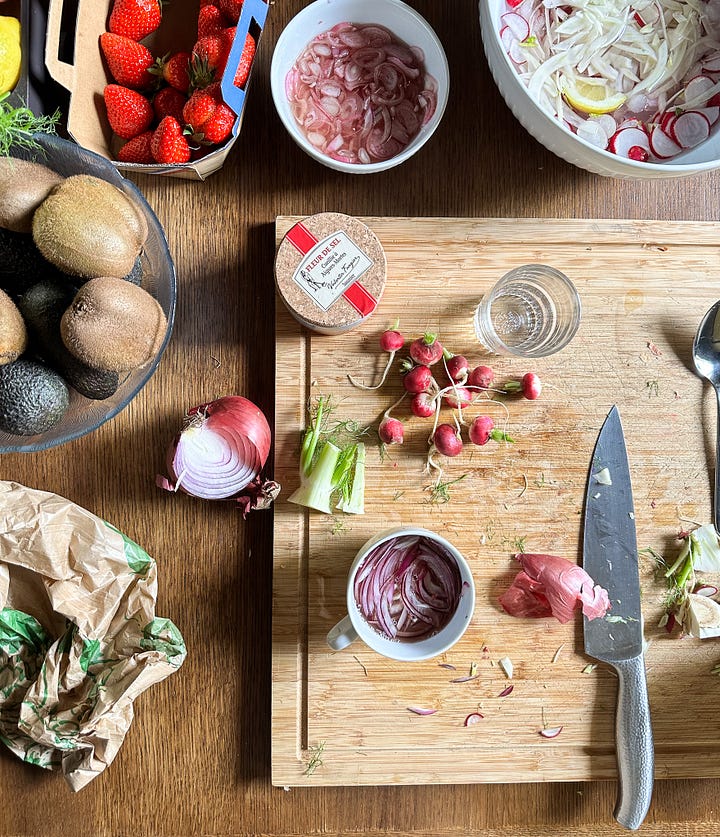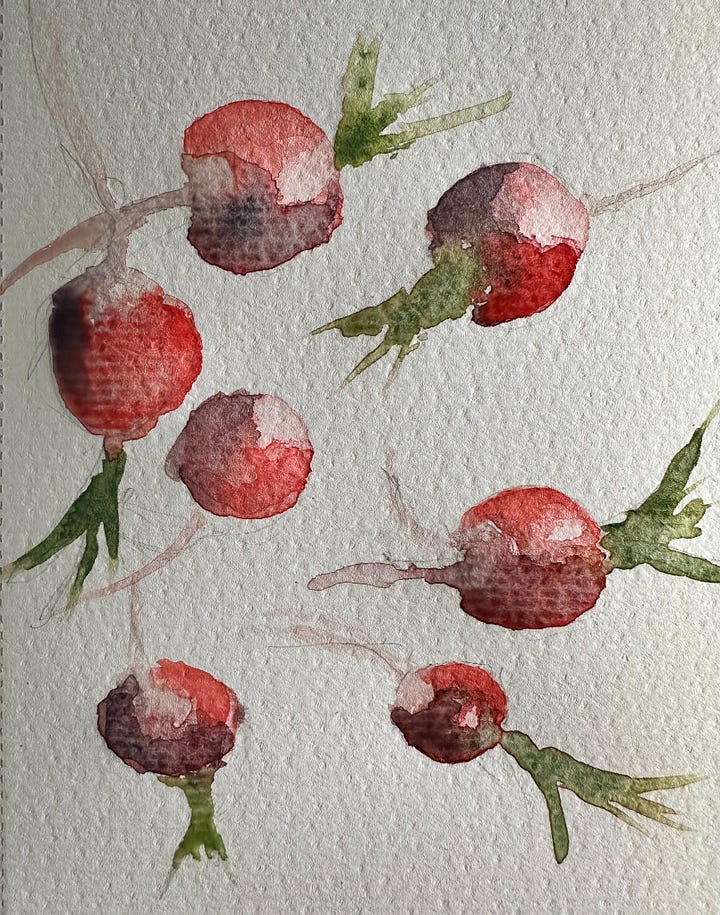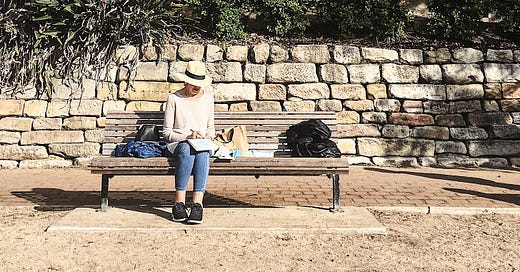My mom taught me to draw. She has always found time and a place to draw, from the secret surfaces on the bottom of wooden chairs when she was little, to the corners of church bulletins. I remember one night she came home from a junior high PTA meeting with a very good likeness of our school principal, Mr. Landry, sketched in the corner of her notes.
She taught me to look at an object, not at the paper. Draw what you see, she’d say. We went through a phase of drawing objects upside down. Or never lifting our pencil from the paper, which left swirly squiggles up and down and around the page. After reading us a story about an artist who was paralyzed from the neck down, we followed her lead and tried drawing with a pencil in our mouths. Those drawings were scratchy and wild, like sound waves.
She taught me what it looked like to be a painter. Sitting down with a little dish of water, a tissue for blotting, a scrap paper for dabbing and a take-away plastic container for a palette. How to take a little watercolour kit with you when you travel. How to set up anywhere, and notice what you see. I didn’t always paint with her. When we traveled to Australia together, I’d go swimming in rock pools while she painted. I taught a workshop while she painted. I wandered through Sydney neighbourhoods while she painted. She taught me how to light the day, by being yourself.
There are other women in my life who have taught me things by being themselves. My mother’s sister Sandra taught me how to cut and fold paper until I had a pile of paper doves. Sandra’s twin sister Susan taught me how to spot ilex on the side of the highway and scale boggy ditches to rescue a few branches for winter wreaths. My grandmothers, my sisters and my friends have all taught me things over the years, like how to mix and toss soil with your hands before transplanting perennials in the garden. How to tie a Windsor knot. How to ski powder. How to knit. How to fry green tomatoes. How to speak with confidence. How to organize a spice drawer. How to run a crisp radish through butter and sprinkle it with sea salt. How to roast a whole spaghetti squash in the oven until it is soft.1 How mothering is caring, and it is also showing. How you don’t have to have children to share who you are.
In Billy Collins’s poem, The Lanyard, the writer remembers braiding pieces of plastic together at summer camp to form a lanyard, a gift for his mother. The memory prompts thoughts on all that his mother has given him versus that plastic craft, made with the help of a camp counsellor -
She nursed me in many a sick room,
lifted spoons of medicine to my lips,
laid cold face-cloths on my forehead,
and then led me out into the air light
and taught me to walk and swim,
and I, in turn, presented her with a lanyard.
There’s no way to balance the gifts from mother versus child. Would my years of homemade cards, phone calls and the odd pair of pyjamas balance the scale? In Collins’s words, you can never repay your mother. So instead I’ll focus on what I’ve been shown, and how, at times, I have noticed and remembered.


The poem was shared by my friend Eshun in her weekly newsletter, (via flavourfull.) The newsletter is meant to share a recipe and perhaps a special ingredient from her online shop, but she always gives us something more: kitchen wisdom, cultural wisdom, and last Sunday, a poem. Eshun is the one who taught me that you can roast a whole spaghetti squash in the oven and when it yields softly to a knife, to cut it in half, shred the flesh and coat it with salt and butter. We were in university at the time, sitting in a late afternoon lecture. Eshun had left the classroom to call her roommate from a payphone, wondering if she could please put her squash in the oven so it would be ready when she got home from class?





You’ve been surrounded by wonderful souls and you’ve learned so much from them. A lovely read. (It’s Mothers Day down here in Australia. A very appropriate piece.) Thanks so much.
Beautiful. Thank you!